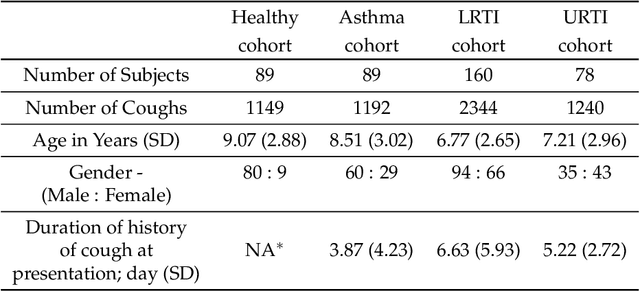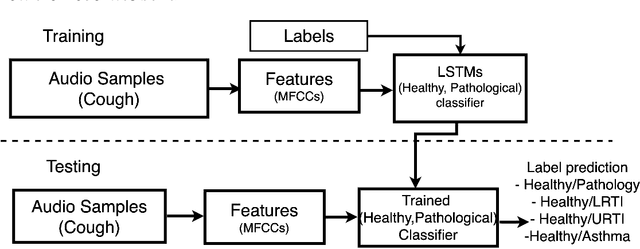Hwan Ing Hee
Deep Neural Network Based Respiratory Pathology Classification Using Cough Sounds
Jun 23, 2021



Abstract:Intelligent systems are transforming the world, as well as our healthcare system. We propose a deep learning-based cough sound classification model that can distinguish between children with healthy versus pathological coughs such as asthma, upper respiratory tract infection (URTI), and lower respiratory tract infection (LRTI). In order to train a deep neural network model, we collected a new dataset of cough sounds, labelled with clinician's diagnosis. The chosen model is a bidirectional long-short term memory network (BiLSTM) based on Mel Frequency Cepstral Coefficients (MFCCs) features. The resulting trained model when trained for classifying two classes of coughs -- healthy or pathology (in general or belonging to a specific respiratory pathology), reaches accuracy exceeding 84\% when classifying cough to the label provided by the physicians' diagnosis. In order to classify subject's respiratory pathology condition, results of multiple cough epochs per subject were combined. The resulting prediction accuracy exceeds 91\% for all three respiratory pathologies. However, when the model is trained to classify and discriminate among the four classes of coughs, overall accuracy dropped: one class of pathological coughs are often misclassified as other. However, if one consider the healthy cough classified as healthy and pathological cough classified to have some kind of pathologies, then the overall accuracy of four class model is above 84\%. A longitudinal study of MFCC feature space when comparing pathological and recovered coughs collected from the same subjects revealed the fact that pathological cough irrespective of the underlying conditions occupy the same feature space making it harder to differentiate only using MFCC features.
 Add to Chrome
Add to Chrome Add to Firefox
Add to Firefox Add to Edge
Add to Edge